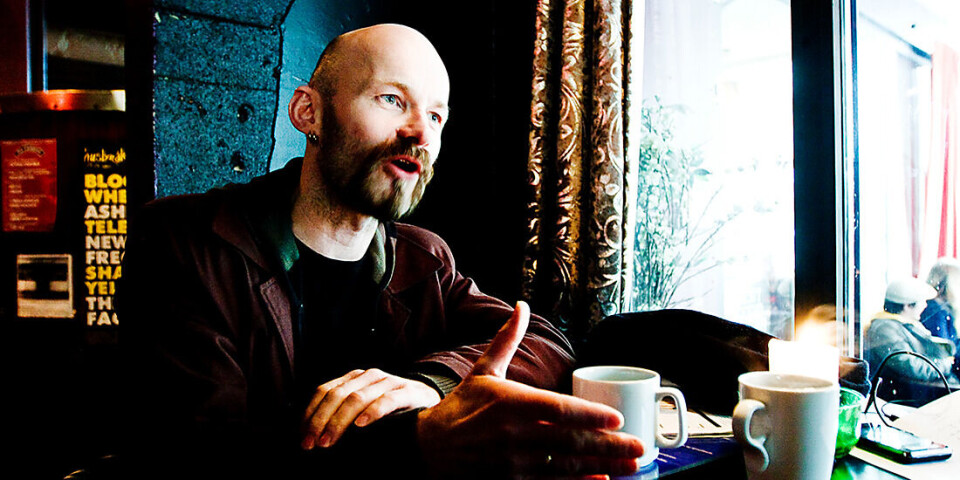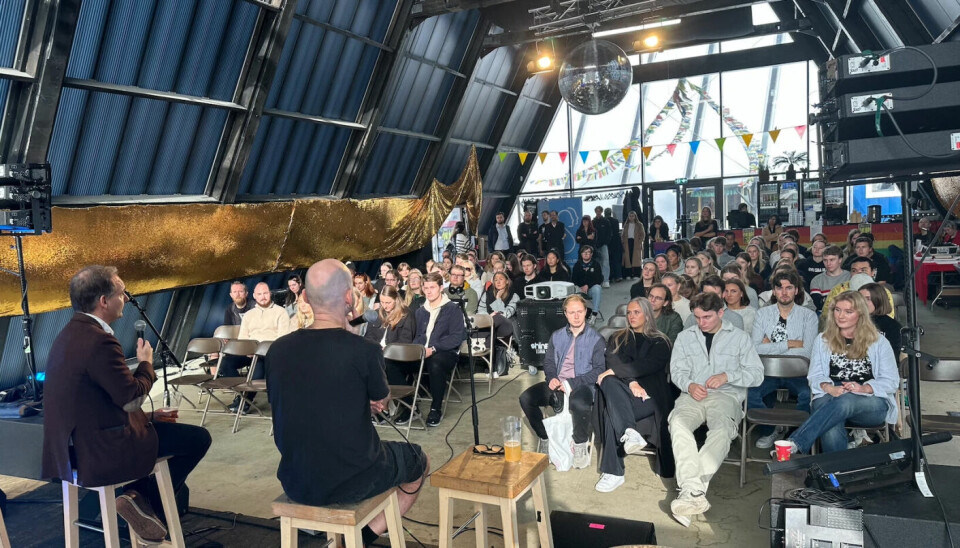THIS CONTENT IS BROUGHT TO YOU BY NTNU Norwegian University of Science and Technology - read more

Students learned better through compulsory attendance and the use of podcasts
Researchers have tested various teaching methods to activate the students.
Consider a group of new sociology students: They need to settle into student life and get to know other students. They are about to embark on studies in a new field and must learn new ways of acquiring knowledge. They also need to come to grips with concepts such as legitimation, linguistic objectification, internalisation, and externalisation.
What in the world do these terms mean and how are the students going to become familiar with them?
Textbooks and lecturers explain these new ideas, and the students will work on them in study groups. But the question still remains: How can students become familiar with new academic concepts and terms and understand how to use them correctly?
NTNU sociology professor Aksel Tjora has both tested and studied new ways of teaching and learning.
“In lectures with 200 students or more, not many of them dare to ask questions, provide input, or take part in discussions. We have now tested a number of different teaching methods in order to motivate the students,” Tjora says.

Building on American research on podcasts in teaching
Recent American research shows an increasing use of film, art, and music in teaching sociology. Podcasts are also used in teaching sociology, but there is still limited knowledge of how educators use this tool.
In 2020, one researcher conducted a search in the American journal Teaching Sociology and found exactly zero articles or commentaries published since 2010 on the topic of podcasts.
Since then, other researchers have investigated the potential of using podcasts to teach sociology. Among other things, they found that podcasts seem to increase student engagement.
“We have explored this further, including by seeing what function podcasts can have in interaction-based learning,” Tjora says.
Lectures are still the dominant form of teaching
Over the last 30–40 years, universities have paid more and more attention to how students learn best.
University learning is largely associated with reading, listening, speaking, and writing. Speaking and writing require the most active involvement on the part of students, and tend to fare rather poorly in relation to measurements of what students spend their time doing.
The preference for passive strategies contrasts with learning as an active process.
“There are many indications that universities and university colleges still have a way to go when it comes to facilitating student learning. Lectures are still the dominant form of teaching,” Tjora says.
Active teaching methods can help integrate students into academic communities, increase motivation and involvement, and facilitate confidence in independent and critical thinking.
“There has been relatively little attention paid to how sociological theory should be taught, and there has been little research on the teaching of the subject,” he says.
He and his sociology colleagues have taken a closer look at this by testing new ways of teaching, and evaluating these approaches in conjunction with the students.

Many more students passed the exam
They have investigated how students can be taught a sociological mindset through interaction-based learning, with emphasis on the function of podcasts.
The researchers used the introductory source in sociology at NTNU as a case study.
The introductory course was restructured in autumn 2018, and steps were taken to facilitate the students’ active, creative, and collective learning. They did this through the use of group work and compulsory attendance in small seminar groups, interactivity in lectures, and academic social gatherings.
The exam was changed to a portfolio consisting of compulsory group-based submissions such as podcasts and blogs.
This required significant follow-up from Tjora and his teaching assistants. However, it increased the completion rate and the number of students who passed the exam by a whole 36 per cent compared to the previous year.
Before the restructuring took place, the course comprised traditional lectures, voluntary seminars in large groups, individual semester assignments, and a 5-hour written exam. A report from 2016 highlighted low levels of interactivity in lectures.

Dared to raise their hand for the first time
The empirical basis of the study that Tjora and his two colleagues conducted in 2021 includes the evaluation of the introductory course in sociology, reference group meetings, and a sample of podcast submissions. In all, 166 out of a total of 224 students registered for exams responded to the survey.
The analysis addressed three main topics:
- a physical student community
- group collaboration
- podcasts as a means of academically thinking aloud
Despite the ongoing Covid-19 pandemic in the autumn of 2021, NTNU conducted physical lectures and compulsory seminars for introductory courses throughout most of the autumn. The goal was to get students back on campus.
The evaluation shows that the students experienced increased confidence through getting to know their fellow students at compulsory seminars. Each seminar group consisted of 10–20 students, in contrast to the lectures involving up to 220 students. Some found these to be socially challenging.
In the evaluation, many students mentioned that they dared to ask questions and participate in academic discussions when they feel comfortable in the social setting.
One of the participants mentions that they have been a student for a year, but the introductory course in sociology was the first time they dared raise their hand and answer a question out loud.
Learning by thinking aloud together
Podcasts were tested as a tool for academically thinking aloud.
“Academically thinking aloud is the starting point for introducing podcasts as a compulsory exercise. The intention is to force students to talk about the subject and get them to relax. Everyone in the group has to participate in the conversation because it becomes very obvious if individuals do not speak or participate,” Tjora says.
Groups of three to four students were given the task of producing a podcast in which they discussed social institutions using sociological terms. A social institution might be a family, a job, a festival, or a leisure activity, etc.
The students had to use relevant terminology and link it to everyday situations. Some chose Halloween as their topic, others chose residence halls, dating, or social media.
Put on sociology glasses
“We found out how students use sociological terms in their day-to-day lives. They put on ‘sociology glasses’," Tjora says.
He explains that from listening to the podcasts, it is clear that they were experimenting with using sociology terms, a little unsophisticatedly and spontaneously. But they did respond to each other’s input and comments.
The students said they learned a lot of sociology just by having conversations with other students. They also said that working together in groups meant that they had to practice arguing for their academic viewpoints.
“In our observation of the students’ work and in their own feedback, it became clear that learning through more spontaneous thinking aloud is key,” Tjora says.
From scepticism to learning
The fact that the teaching contained a good deal of compulsory group work was not immediately met with great enthusiasm.
“In the beginning, we experienced a general scepticism towards group work. This was a little surprising because it's something they've been used to doing at upper secondary school,” Tjora says.
However, in the evaluations after the students had completed the semester, it appeared that the group work provided good learning outcomes.
The students felt that they gained 'insight into how others understand specific tasks', that there was a 'low threshold for asking questions', and 'someone to talk to regarding assignments and the syllabus'.
According to the students’ evaluations, experiencing that they can explain something to others using their own words gave them a sense of achievement:
‘Having other people explain their perspectives and opinions creates a more nuanced picture where I feel I gain broader insight. It has also helped in explaining difficult theories to others using just a few, understandable words. I also learn from myself when I am forced to understand in order to explain things to others’.
It has been important for the educators that the students become accustomed to talking academically among themselves as a learning process. But also to free themselves from the need to only talk to lecturers when they perceive something in their studies as academically challenging.
Fewer free riders on podcasts
Group work also has problematic aspects, especially when it comes to written group assignments. This is related to asymmetrical effort, where students find that they ‘learned the most and remember most of what I myself have written or said’, partly because each group tends to distribute tasks among the individual members rather than working on them together.
This meant that the students felt they learned more from working on an entire assignment alone, or that group members who are given the most challenging subtasks learn the most.
Several students reported in the evaluation that they felt that they did most of the work and that they have had to carry the load because of little initiative within the group. This was said to be particularly challenging when it came to producing a piece of written work together.
However, thinking aloud together when producing podcasts and complying with academic requirements was an exercise in which everyone had to contribute. As a result, there were fewer free riders and more involvement, spontaneity – and learning.
“We found that many students developed the ability to academically think aloud, where they were able to understand their own everyday experiences and surroundings sociologically. From an empirical perspective, the podcasts in particular show this most clearly,” Tjora says.
Reference:
Lysvik et al. Innsiktsfull responsivitet: En analyse av kollektiv høyttenkning som pedagogisk metode i det sosiologiske innføringsemnet (Insightful responsivity: An analysis of collective thinking aloud as a pedagogical method in the sociological introductory course), Norwegian Journal of Sociology, vol. 7, 2023. DOI: 10.18261/nost.7.6.3
More content from NTNU:
-
Why are pregnant women in Norway so worried?
-
Politics on Facebook: Populist parties choose divisive issues on purpose
-
Social media is connected to cyberbullying – but not how we thought
-
Forskere ved NTNU får nesten 24 millioner av EU for å lage nye strømomformere
-
This helps the youngest children enjoy school more
-
Can we tap the ocean’s power to capture carbon?





































